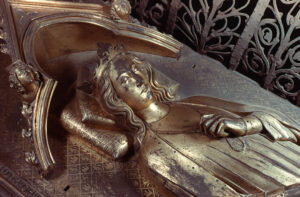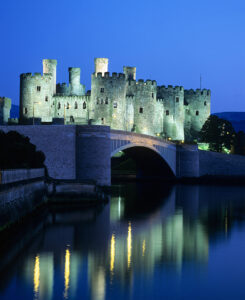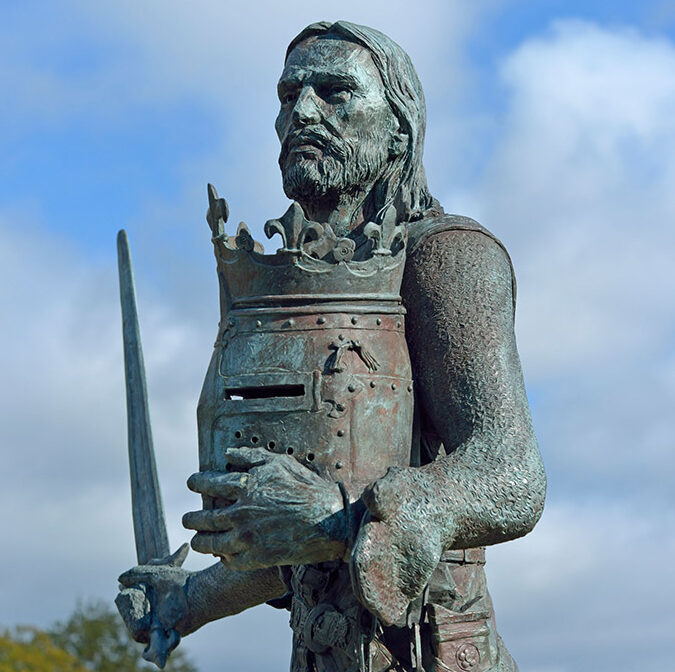From Flower of Chivalry to Hammer of the Scots, King Edward I had more nicknames than any other monarch, but how did he measure up to them?
Words by Neil Jones
The medieval chronicler Peter Langtoft, a contemporary of King Edward I, forecast that people would talk about the ‘handsome and great’ monarch for as long as the world lasts, ‘For he had no equal as a knight in armour / For vigour and valour, neither present nor future.’
Edward certainly has a long-lived reputation, resonating down the centuries through his many famous nicknames: the English Justinian, the Lawgiver, the Father of the Mother of Parliaments, Flower of Chivalry, Hammer of the Scots and, more informally, Longshanks – at six-feet two-inches tall he towered over his subjects, both physically and metaphorically.
In the 750th anniversary year of his accession to the English throne in 1272, it’s the perfect time to ‘speak of King Edward and of his memory’ to consider how his deeds measure up to his dazzling image.

Born in 1239, the eldest son of Henry III and Eleanor of Provence, Edward was a hot-headed, arrogant youth, whose violence on one occasion resulted in him paying a fine to a servant he had struck and injured. Yet, it was also claimed the young prince was protected by angels, miraculously escaping harm; for example, when lightning struck his entourage killing two other people.
When Henry, accused of misgovernment, fell out with his barons, Edward at first supported his charismatic uncle, Simon de Montfort, who led the baronial clique against the Crown. But by the time civil war erupted in 1264, father and son were reconciled and fought together at the Battle of Lewes, which ended with both of them being captured. The Song of Lewes (c.1264) unflatteringly noted of Edward: ‘A lion by pride and fierceness, he is by inconstancy and changeableness a pard [leopard]’.

After Edward escaped and killed de Montfort at the Battle of Evesham (1265), Henry was once again free to reign, but for the next seven years until his death in 1272, he effectively left his son in control of government.
Edward was on crusade abroad when he heard of his father’s demise, but with the barons dutifully swearing fealty to him, and with England in the hands of regents like his trusted clerk Robert Burnell, he felt sufficiently secure to return at a leisurely pace, only arriving back for his magnificent coronation at Westminster Abbey in 1274. By now Edward was 35 years old and much matured.
His marriage, aged 15, to 13-year-old Eleanor of Castile in 1254, may have been a political match to help protect Gascony, England’s only remaining land in France, but the union had flourished into a deep love that would produce 16 children (five reached adulthood). Also by Edward’s side providing a stabilising influence was Burnell, who became his chancellor.
The new king was tested early in his reign by the repeated refusal of Llywelyn ap Gruffydd, Prince of Wales, to pay him due homage and, losing patience, Edward invaded Wales with ruthless effect in 1277.
Llywelyn’s later death in a skirmish in 1282 and his brother Dafydd’s brutal execution in 1283 dealt Welsh dreams of an independent country a crushing blow. Edward, meanwhile, romanticised his adventures with Arthurian-style Round Table court celebrations at Nefyn in North Wales.
An ace soldier and military leader, Edward was also a shrewd strategist, consolidating his conquests in Wales through a no-expenses-spared programme of castle building: most notably the bristling fortresses of Conwy, Caernarfon, Beaumaris and Harlech in his ‘Iron Ring’ around the mountains of Snowdonia, the fountainhead of Welsh resistance.

Today boasting World Heritage Site status, the mighty quartet embody the genius of the top military architect, Master James of St George, whose cutting-edge ‘walls-within-walls’ designs culminated in the imposing sophistication of Beaumaris.
Edward established new towns and trading centres populated with English settlers in his conquered land, most linked to his castles and surrounded by walls. Officials were appointed to administer the principality, the English shire system was introduced, and according to legend, Edward even schmoozed recalcitrant native nobles by promising them a Prince of Wales born on Welsh soil and speaking no word of English – then promptly presented them with his babbling baby son, born at Caernarfon Castle.
In fact, Edward junior was 16 when he was formally made Prince of Wales, a title reserved ever since for the heir apparent of the British throne.
This is an extract. Read the full article in the September/October issue of BRITAIN out on 12 August.
Read more:






 © 2024
© 2024